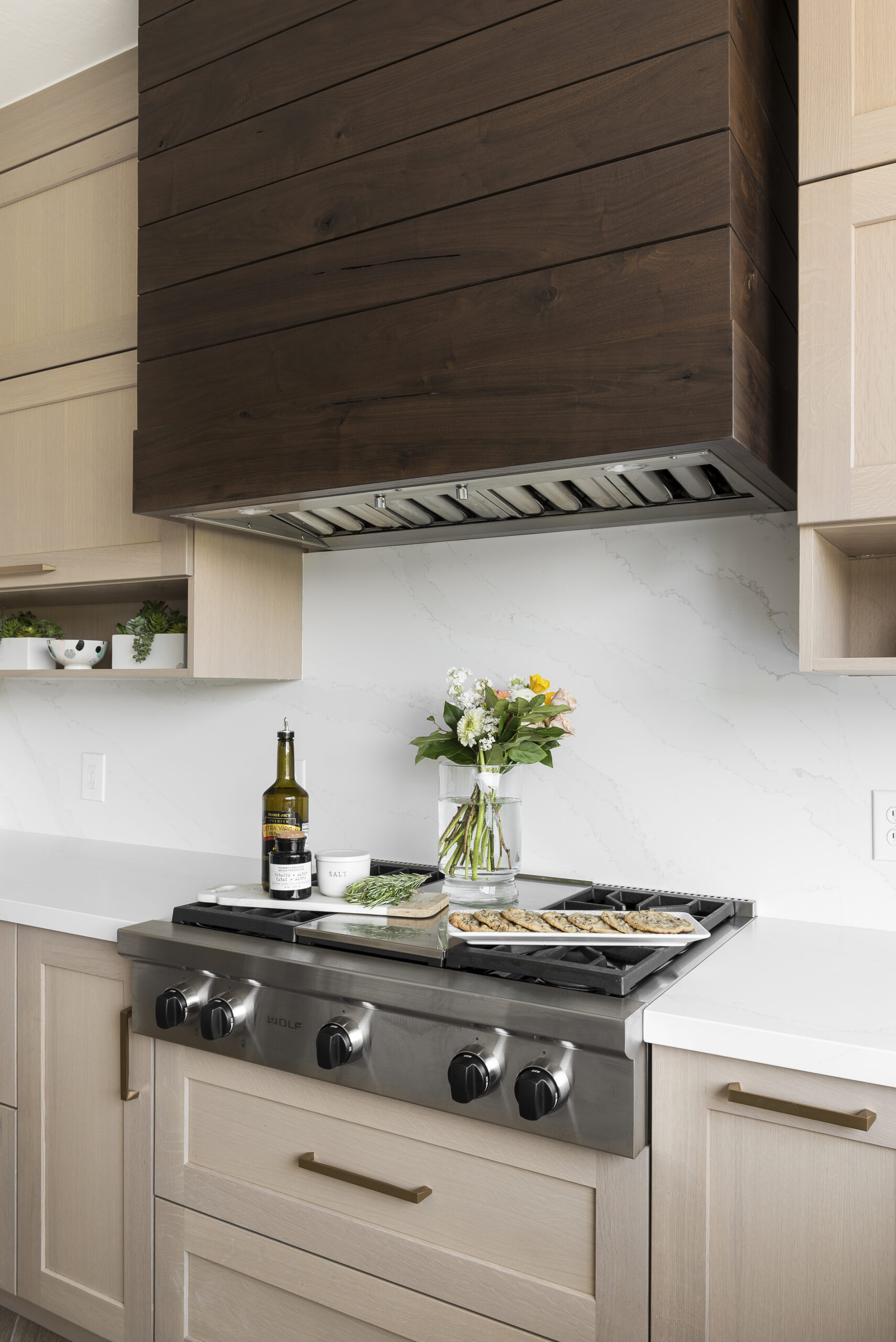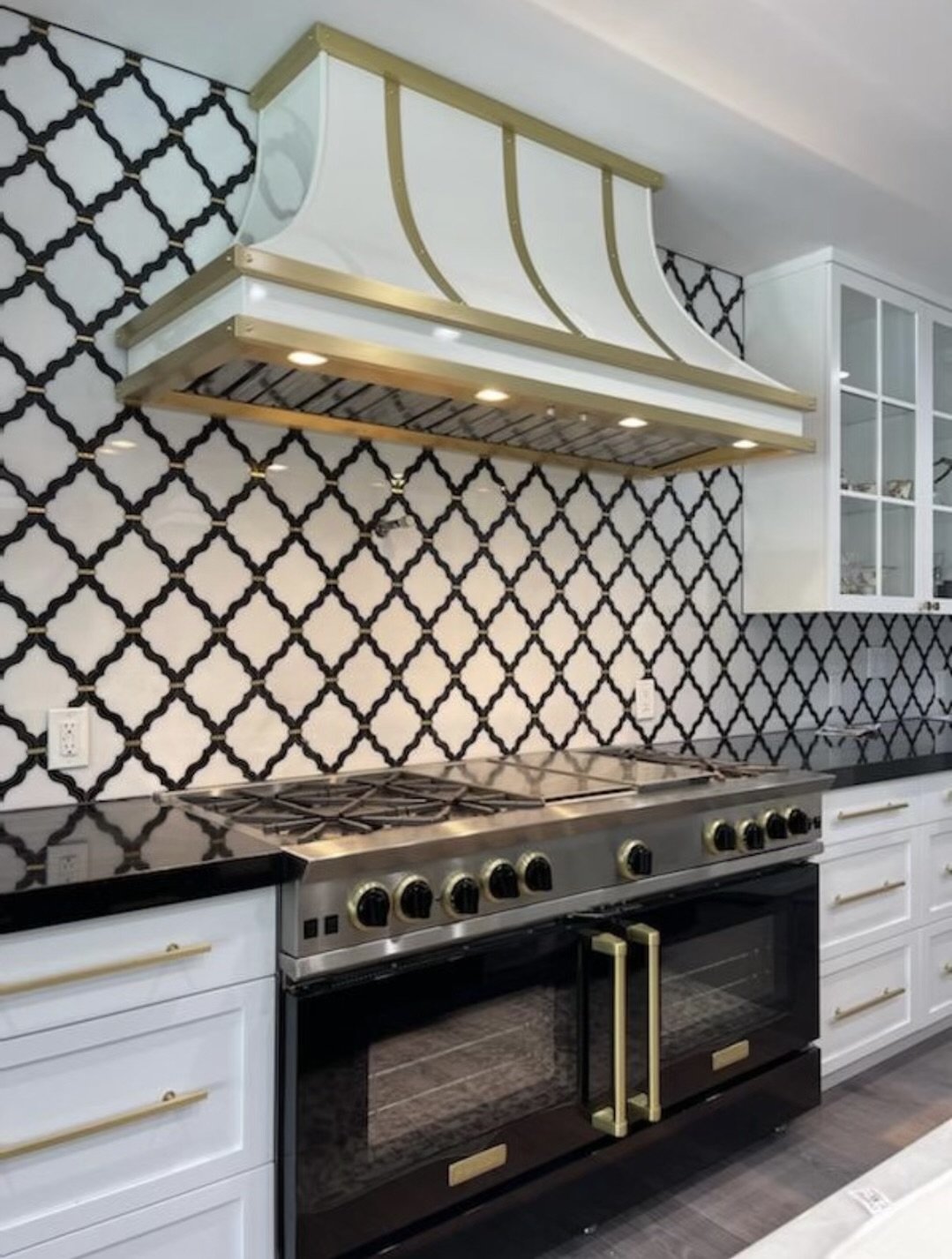


For further information please select from a hood style below:
For further information please select from a hood style below:
Modern Aire can customize the dimensions, materials, trim, and shape of any of our offered wall or island models.
In order to determine the proper amount of air flow required for your cooking equipment, you must first know how many BTU’s (british thermal units) your gas range emits. Then, with a simple calculation you can determine the amount of CFM (cubic feet per minute) required to properly exhaust your cooktop. For example if your cooktop emits 90,000 BTU’s you would divide 90,000 by 100 and get 900CFM. This means that 900 CFM or more would efficiently exhaust your range. For electric and induction cooktops choose a blower with a minimum of 200 CFM per 12 inches of cooktop width. Remember, it’s always a good idea to round up vs. down.
Determining the proper height for your vent hood can be simple as long as you know the height of your ceiling. Let say for example that your ceilings are 9ft high, that’s 108 inches. You would then take the total 108 inches and deduct 36 inches for the height of your range leaving you 72 inches. Then you will need to determine how high you would like your range hood off of your cooktop. Modern-Aire’s minimum hanging height is 30” above the cooking surface with a maximum installed height of 36” above the cooking surface. Modern-Aire recommends hanging your vent hood 32 – 34 inches above the cooking surface for optimal performance, so let’s just say that you have decided to hang it 33 inches above the cooking surface. You have 72 inches remaining, so deduct the 33 inches for the distance between your cooking surface and the bottom of your range hood and you now have a total hood height of 39 inches.
The ideal width of your vent hood should be six inches wider than your cooking surface, therefore overhanging by three inches on either side. Having the range hood wider than the range allows for additional capture area, providing more efficient ventilation. Where space is restricted, the hood should be no less than the width of the cooking surface. Island units are a bit less forgiving than wall mounted units, requiring the additional 6 inches of capture area due to drafts within the room. Abiding by these recommendations will ensure optimal performance from your Modern-Aire vent hood.
The depth of your range hood should ideally cover the cooking surface of your range from front to back. Our standard wall vent models range from 24 to 27 inches deep depending on cooking surface requirements, while our island models are a standard 27 inches depth. Modern-Aire’s liners are available in either 18 1/8 or 22 1/2 inch depths. Modern-Aire Ventilating can accommodate custom depth and width requests, please consult with your sales representative so they may assist you with customizing the dimensions required for your vent hood.
Choosing the right range hood can be like selecting the right outfit, it’s a matter of personal preference and style. Your kitchen ventilation hood will likely be one of the focal points in your kitchen, making it one of the important design elements. When deciding on a design, take several things into consideration including whether the rest of your home is traditional, contemporary or even rustic. Also, consider the elements of color throughout your home that can ADD / IMPACT material possibilities for your ventilation hood.
Modern Aire recommends that each range hood is at least as wide as the range beneath it and up to 6” wider.
Height wise, the hood must be mounted a minimum of 30” from the range and we recommend up to 36” above the range. Feel free to see what works best in your kitchen.
We recommend the hood is anywhere from 24” – 27” in depth. You’re welcome to reduce this, however you may notice that the functionality of the hood decreases with lower depth applications.
Modern Aire is happy to send out samples to assist in the material selection process. Feel free to request them with your dealer/rep.
Any brass or copper finish without a clear coat is going to patina overtime. The lengthiness of this process will vary depending upon the environment you live in. Fingerprints will also cause the localized area to age faster than an untouched area. If you prefer less maintenance, but still want the general look of brass or copper, we recommend adding a clear coat atop the finish while quoting out your custom hood to stop the patina process.
Modern Aire offers 3 kinds of blowers: internal, external, and inline. If you have a short duct run, internal is most likely going to be your best choice. If you have a longer duct run, you can benefit from the quieter external or inline options. External blowers are mounted on the side wall or roof while the inline blower is mounted inline with the ducting(typically in the attic).
No, you do not! Modern Aire builds out hoods with fully integrated undersides. This means that we include the lights, switches, and blower as a single unit as opposed to some other manufacturers that put a separate non-matching liner within their shell.